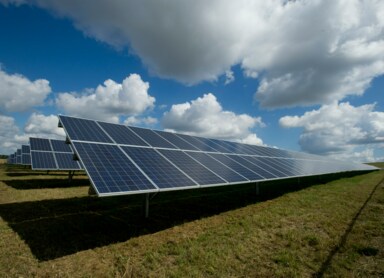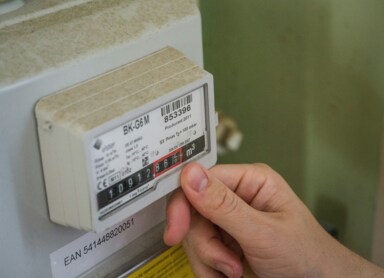Biogas Plants – The Future of Renewable Energy? Benefits or Threats to the Environment?
In the search for energy independence, most people initially look to photovoltaics. Indeed, solar energy is a good example of renewable energy, but it is certainly not the only one. Biogas plants, which use organic waste to produce electricity, heat water, and, after purification, serve as fuel for CNG engines, are gaining gradual popularity. How do biogas plants work, and is investing in them worthwhile?
Biogas Plants – What Are They and How Do They Work?
Biogas plants process organic waste using specific microorganisms. Chemical reactions lead to the fermentation of residues, producing a gas mixture primarily consisting of methane and carbon dioxide. The higher the methane content, the greater the caloric value of the resulting fuel. The most efficient raw materials include wheat grain, rapeseed meal, glycerin, and corn grain.
In Poland, biogas plants were previously used on a small scale, primarily in wastewater treatment plants and landfills. Modern infrastructure can also be installed as part of farm or business operations.
The fermentation process consists of four stages1:
- hydrolysis,
- the acidogenic phase,
- the acetogenic phase,
- the methanogenic phase.
Several factors affect the efficiency of biogas production. Above all, it’s crucial to ensure proper conditions for the bacteria responsible for fermentation. In practice, mesophilic fermentation, occurring at temperatures between 32–38°C, is most commonly used. Additionally, the decomposition of organic input takes time, so the duration of the period during which the material remains in the chamber is regulated. This is referred to as the hydraulic retention time.
Another step involves matching the load on the entire system to the parameters of the biogas plant. Overloading could damage the installation, while insufficient load could stall or halt the process. The load of impurities in the chamber is calculated using a mathematical formula.
Finally, inhibitors—compounds that hinder the fermentation process—must be eliminated. These can include plant control agents, for instance.
Small Biogas Plants – Are They Worth It?
Biogas plants may be associated with massive installations requiring substantial financial resources, inaccessible to small or even most medium-sized businesses or farms. Indeed, installations with a capacity of up to 0.5 MW can cost several million PLN. However, small-scale biogas plants are becoming increasingly affordable.
A few years ago, a 10 kW installation could be set up for just over 100,000 PLN 2. The choice of installation capacity should depend not only on costs but also on the availability of substrates for fermentation. Farms producing significant amounts of usable material, such as slurry or leaves, might consider investing in a larger biogas plant than they need, as excess energy can be sold to the grid.
Businesses not involved in agricultural production can also consider biogas plants but should first assess whether they have access to inexpensive energy substrate supply channels. Otherwise, the investment may not be profitable.
Choosing the right installation parameters can significantly reduce electricity and heating bills. In times of rising energy costs, this is a tangible benefit. However, one should not forget the high investment costs and the need for regular raw material supplies. A biogas plant is not a wind or photovoltaic power plant; without fuel, it won’t function.
Subsidies for Biogas Plants in 2024 – How to Obtain Them?
The Polish government is gradually withdrawing subsidies for agricultural biogas plants. Until recently, applications could be submitted under the Energy in Rural Areas program, offering grants or loans covering up to 100% of eligible costs. This option is no longer available, but future subsidies could potentially be reinstated.
However, farmers still have access to other forms of financial support, such as:
- The Agroenergia program, which provides funding for photovoltaic installations and heat pumps;
- The Green Energy on Farms program, which supports photovoltaics, energy storage systems, and EMS (Energy Management Systems).
Additionally, there is the option to apply for white certificates for improving the energy efficiency of infrastructure or reduce agricultural taxes through investment relief. Farmers considering a transition to green energy should consider enlisting a company specializing in locating and securing funding.
The Largest Biogas Plants in Poland – Overview and Locations
As of October 15, 2024, 146 entities were registered as agricultural biogas producers in Poland. The largest installations include those located in:
- Glinojeck – 2.559 MW;
- Murowana Goślina – two installations by the same producer with capacities of 2.996 MW and 1.496 MW, respectively;
- Poznań – 2.134 MW;
- Liszkowo – 2.126 MW;
- Parczew – 2.4 MW;
- Gdańsk – 2.4 MW.
One might expect that Poland, with its strong agricultural traditions, would invest heavily in such agro-installations. However, the total capacity of all biogas plants remains relatively low. This can be attributed to high investment costs and limited government support compared to, for example, photovoltaic subsidies.
Biogas Plants – Benefits or Environmental Risks?
Biogas plants are an efficient way to enhance energy security for businesses, but producing renewable energy is just part of the story. Farms investing in biogas plants become attractive markets for other farmers, who can dispose of organic waste this way. The development of biogas plants also promotes the deliberate production of energy substrates, potentially creating new jobs.
Properly designed and operated biogas plants are almost entirely environmentally safe (aside from the potential negative impact of improperly managed digestate). They help reduce emissions from conventional energy sources, greenhouse gases, and the risk of groundwater contamination. Contrary to the concerns of many communities, biogas plants produce far fewer odors than fertilizing soil with raw slurry.
1. Biogaz rolniczy – produkcja i wykorzystanie; Mazowiecka Agencja Energetyczna Sp. z o.o. [dostęp: https://www.mae.com.pl/files/poradnik_biogazowy_mae.pdf 18.10.2024 r.]
2. https://www.tygodnik-rolniczy.pl/pieniadze/male-biogazownie-jakie-sa-koszty-i-co-daja-rolnikom-2383690 [dostęp: 18.10.2024 r.]






